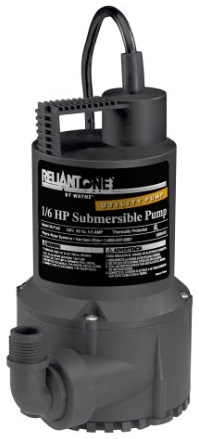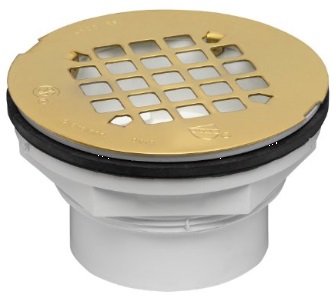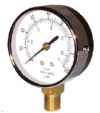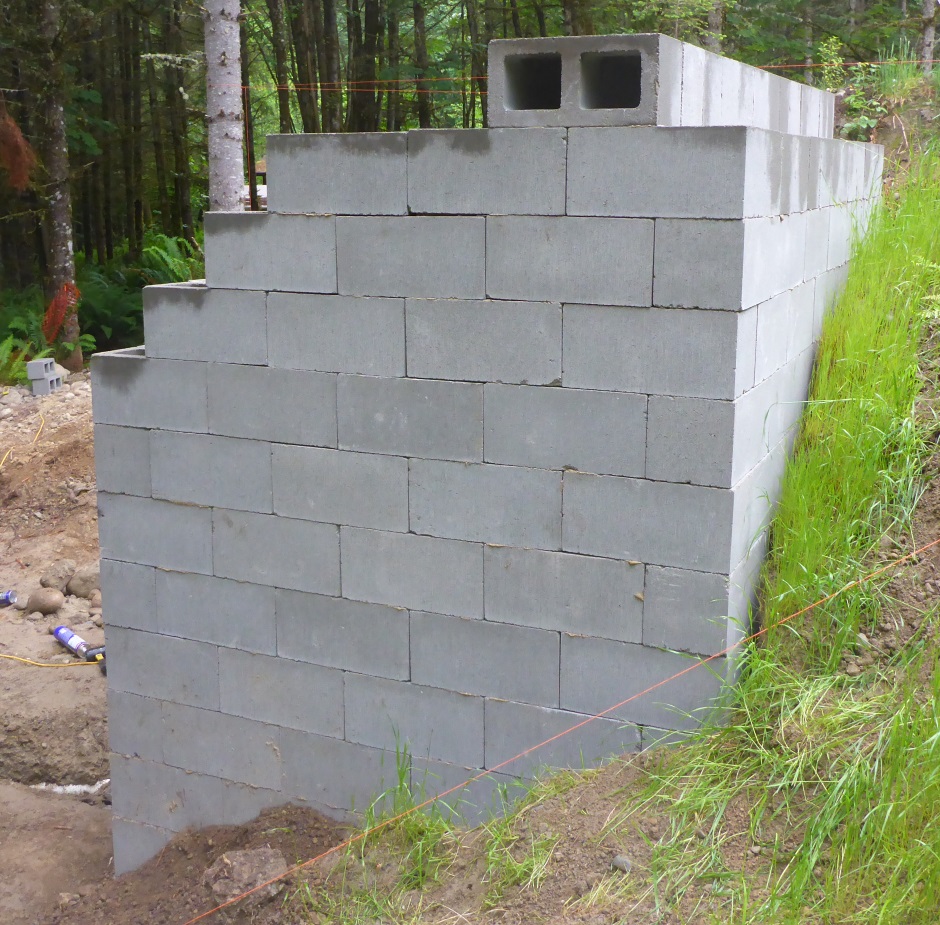Home Site Map - Techniques - Plot Infrastructure -
Rain Water System - Pressurized Water
![]() For the rain water to be useful around your property from faucets
you need to make it pressurized.
For the rain water to be useful around your property from faucets
you need to make it pressurized.
Getting water from the reservoir tank
Rain pumping shelter
Details of the building used to house the pressure tank, buffer tank, and pump are detailed on the web page called Concrete Block Shed .

Submersible pump
You want to avoid putting the pressure pump at the level of the bottom of the reservoir tank because that would involve having to dig another hole and it would be difficult to maintain as it is so far under ground level. Instead it is best to use a small submersible pump in the reservoir tank on the bottom that can pump the water to a small above ground tank that then goes to the pressure pump. The submersible pump only needs to raise the water about 10 feet (the depth of the reservoir tank plus the depth of the small above ground tank).

Submersible pump float switch
A float switch in bottom of the storage reservoir tank ensures the water level in the storage reservoir tank is high enough for the submersible pump to have something to suck on. It shuts off the submersible pump if the storage tank is not full enough. This stops the submersible pump from being damaged or just wasting electricity. The float switch level should be adjusted so it allows power to go to the submersible pump if the water level is above about 2". It is a "closed when up" switch. You can buy a submersible pump with an included float switch.
A second float switch is positioned in the top of the buffer tank and is used to turn off the submersible tank when the buffer tank is full. It is a "closed when down" switch.
 Details here..
Details here..
Above ground storage tank
This tank is filled by the submersible pump. It acts as a buffer before the pressure pump in order to smooth out the various sporadic operation of the various pumps. A sensible size is about 55 gallons.
 Details here .
Details here .
Best to put the outlet in the bottom of the rain barrel.
Making high pressure water
Pressure pump
This is used to pump water from the buffer tank into the pressure tank.
Pressure pump float switch
This ensures the water level in the buffer tank never falls below the height of the outlet pipe (that's near the bottom of the buffer tank). The float switch level should be adjusted so it allows power to go to the pressure switch and pressure pump if the water level is just above the height of the pipe that goes to the pressure pump.
 Details here
.
Details here
.
Pressure Tank
The pump is not used to directly pump water to hose pipe. If that were the case then the pump would need to be on all the time to maintain the water pressure to your yard taps. Instead what happens is that the pump is used to build up water pressure in a pressure tank. When you turn on a yard tap, you are using water pressure from the pressure tank. Only if you leave the tap on for a while will the pressure gradually reduce, which will the trigger the pump to turn back on to build up a reserve of pressure again.
A pressure tank is something like 5 foot high with about a 3 foot diameter. Pressure tanks have strong walls that can withstand at least 100 pounds per square inch (psi) pressure. There is just one pipe into the tank at the bottom that is both the inlet and outlet. Inside the tank is air and the air cannot get out. As you pump water into the pressure tank, the air is compressed. When the pump isn't on and you operate a tap in your yard then the compressed air pushes on the water to drive it to the yard tap. There is a rubber membrane inside the tank that separates the air from the water, but the principle would work even if the membrane were not present.
Typically there is a pressure relief safety valve at the top of the pressure tank, but you really would not want to put it to the test.
The pressure tank I used can be found here.
Pressure Switch
A pressure switch is what provides the mechanism for stopping the pressure pump once the required pressure in the pressure tank has been reached. This switch is the other thing (in addition to the bottom float switch) that determines whether power is sent to the pressure pump to turn it on. Typically a pressure switch is set to turn on the pump when the pressure has dropped to 50 psi and turn it off once the pressure has reached 70 psi. The pressure switch allows you to adjust the figures. If you set only a small range between the min and the max then the pump will come on more frequently (so will wear out sooner). If you set the range too wide then you will have a noticeably variable water pressure. A 20 psi difference is a good compromise. In my case I set an average pressure of 50 psi, ie between 40 and 60 psi.
The pressure switch I used can be found here.
Pressure Gauges
There is no fundamental need to a pressure gauge, but I would recommend having one. A pressure gauge allows you to see what going on and allows you to properly adjust your system. Have it close to the pressure switch. It lets you adjust the spring mechanism on your pressure switch to the right on and off pressures.
The pressure gauges I used can be found here.







 Pressure pump
Pressure pump
